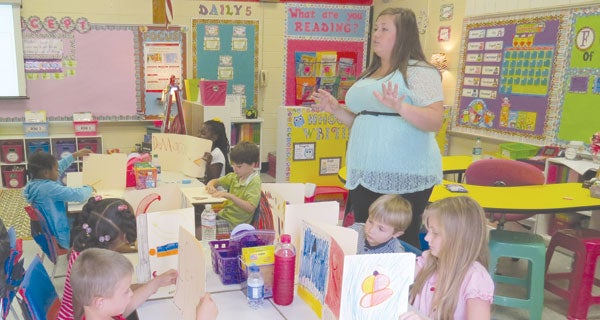Getting into the ACT: Schools to see new testing
Published 2:00 am Wednesday, September 4, 2013

Toni Johnson teaches students in the second grade at Brewton MIddle School – teaching new standards for new testing.
Alabama students are looking at a different way of testing in the years ahead as the No Child Left Behind initiative is dissolved, making way for the Plan 20/20 initiative of instruction.
Although testing was done last spring under the old Annual Yearly Progress standards, future tests will be conducting following new guidelines, officials say.
Randall Little, superintendent of education for Escambia County Schools, said the scores released by state officials show good progress in student learning, but also showed some shortcomings as well.
“Overall, our scores were good using the ARMT-Plus testing,” Little said. “We are doing well in all grade levels, but we do have some improvements we need to do in seventh- and eighth-grade math. I was pleased with the scores with the exception in that one area.”
Little said future tests will be given using a new assessment system and could see a change in scores for the next year.
“We are completely switching over our accountability and assessment system,” Little said. “The new system will not fully be in place until 2016. That means this year will be a major benchmark as we switch from AYP to 20/20, based on the ACT assessment.”
Once the ACT assessment system is in place, students across the state will be tested using new methods based on the standards currently in transition at local schools.
Lynn Smith, superintendent of education for Brewton City Schools, said the new tests will be an adjustment for teachers and students.
“Under the new standards, we expect the content of the tests to change dramatically,” Smith said. “In the next spring testing, we will have test questions that were piloted by ACT in the last test. We don’t know much about how that content will be assessed. But, by teaching standards and hopefully we will get an idea of the type of question that will be on the test for students, we can prepare everyone for the test next May.”
Smith said ACT officials are developing a new test to be used to test individual students and not just testing standards.
“Some of the questions will be much more stringent than in the past, especially in the area of critical thinking,” Smith said. “The end-of-course tests will give us a better look at our areas of weakness within a course. In the old test methods, we didn’t have information on where those weaknesses were.”
Little said he is anxious to see the progress the new testing system will be able to provide to students and ways of teaching standards for the instructors.
“The new testing will give us information that will help us better prepare students and close some achievement gaps we have seen,” Little said.
“Under the AYP, testing results gave us an all-or-nothing grade. Using this new method, we can better see progress and work on closing those individual student achievement gaps and track the individual progress of a student in math, science and reading. Once everything is in place by closing those gaps, our students will be either college, career or military ready.”





